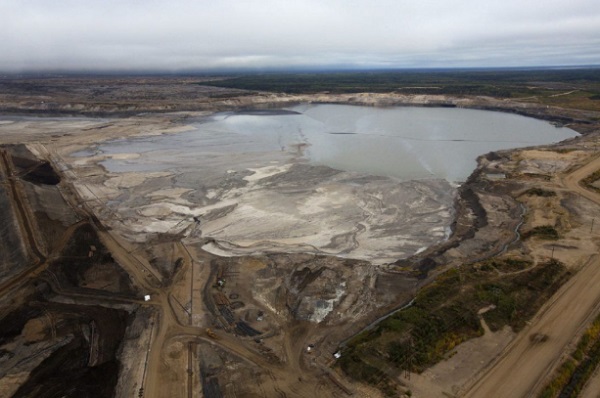Energy
Tech giants’ self-made AI energy crisis

For years tech giants have been helping climate catastrophists shut down reliable fossil fuel electricity. Now the grid they’ve helped gut cannot possibly supply their growing AI needs.
|
|
For years tech giants have been helping climate catastrophists shut down reliable fossil fuel electricity, falsely claiming they can be replaced by solar/wind.
Now the grid they’ve helped gut can’t supply their growing AI needs.¹
- For the last decade, tech giants such as Apple, Microsoft, Meta, and Google have, through dedicated anti-fossil-fuel propaganda and political efforts, promoted the shutdown of reliable fossil fuel power plants in favor of unreliable solar and wind.
- Tech giants have propagandized against reliable fossil fuel power plants by falsely claiming to be “100% renewable” and implying everyone could do it. In fact, they have just paid utilities to credit them for others’ solar and wind use and blame others for their coal and gas use.²
- In addition to their “100% renewable” propaganda, tech giants directly endorsed people and policies who shut down reliable fossil fuel power plants.E.g., The RE100 coalition, including Google, Apple, Meta, and Microsoft, advocates for policies to “accelerate change towards zero carbon grids at scale by 2040.”³
- Companies’ propaganda that solar/wind could rapidly replace fossil fuels has proven false.
Statewide blackouts in California (2020) and Texas (2021) were caused by the failure of solar/wind—which can go near zero at any time—to make up for lack of reliable fossil fuel capacity.
- Thanks in significant part to tech giants’ advocacy, we have now shut down enough reliable power plants to be in a nationwide electricity crisis.
For example, most of North America is at elevated/high risk of electricity shortfalls between 2024-2028.⁴
- The anti-fossil-fuel, pro-unreliable solar and wind political climate that tech giants have fostered is getting much worse, as the Administration has pledged to further reduce reliable electricity supply via power plant shutdowns and add artificial demand through EV mandates.
Biden’s EV mandate: a dictatorial attack on the American driver and the US grid
·APR 22Biden’s de facto mandate of over 50% EVs by 2032 is a dictatorial attack on the American driver and the US grid that will 1. Force Americans to drive inferior cars. 2. Place massive new demand for reliable electricity on a grid that is declining in reliable electricity supply.
Read full story - While for years tech giants didn’t seem to have any concern about the electricity supply disaster their propaganda and policies were bringing about, they are now very interested because of the accelerating power requirements of computing, above all the hyper-competitive AI space.
- To function at its potential, AI requires massive amounts of power. E.g., state-of-the-art data centers can require as much electricity as a large nuclear reactor.⁵
- Electricity demand from US data centers already doubled between 2014 and 2023. Now with the fast growth of energy-hungry AI, demand from data centers could triple from 2.5% to 7.5% of our electricity use by 2030, according to Boston Consulting Group.⁶
- In large part due to AI, nationwide electricity demand is projected to skyrocket. Official 10-year projections for the US have summer and winter peak demand rising by over 79 gigawatt and over 90 gigawatt. 90 gigawatt is equivalent to adding the entire power generating capacity of California (!)⁷
- Given the woeful underpowered grid that AI giants have helped bring about, dramatically rising demand from AI will not only contribute to massive electricity shortages, but it will also destroy a lot of potential for AI to occur in the United States.
- Limited and expensive electricity will force data centers to operate with higher cost or lower capacity within the US—or take a performance hit in the form of increased latency (which can drastically reduce the value of the product) by moving offshore.
- Not only is offshoring data centers destructive from an economic standpoint, it also poses a substantial security risk. E.g., Building a data center in China—which we already depend on dangerously for critical minerals—gives the CCP physical power over more parts of our economy.
- Economically, data centers are a gold mine of opportunities.Globally, data centers employed 2M people full-time in 2019, many in high-skill/high-pay jobs—and this number is forecast to increase nearly 300K by 2025.
Our gutted grid will cost many Americans these opportunities.⁸
- In the face of woefully inadequate electricity supply for their AI goals, tech giant CEOs are finally speaking up about the lack of power.
E.g., Meta CEO Mark Zuckerberg said in an interview that energy will be the #1 bottleneck to AI progress.
- It is not enough for tech giants to warn us about the lack of reliable power. They need to take responsibility for their anti-fossil-fuel advocacy that helped caused it. And they need to support energy freedom policies that allow all fuels to compete to provide reliable power.
End preferences for unreliable electricity
·DECEMBER 14, 2022Today’s grids are being ruined by systemic preferences for unreliable electricity: 1) no price penalty for being unreliable 2) huge subsidies for unreliables 3) mandates for unreliables Congress should end these now. The Opportunity America, given its combination of abundant domestic energy resources, technological ingenuity, and free-market competition, has …
Read full story - An example of a tech giant influencer not taking any responsibility for causing the electricity crisis is BlackRock CEO Larry Fink, who pushed companies and governments to adopt “net-zero” policies using mostly solar/wind, but now admits they can’t power AI data centers!
- A better attitude toward electricity was expressed by OpenAI CEO Sam Altman: “There will always be people who wait and sit around and say ‘we shouldn’t do AI because we may burn a little more carbon’… the anti-progress streak” and this “is something that we can all fight against.”⁹
- America faces a choice. We can either continue our current trajectory, descend into a Third World grid, and become totally inhospitable for AI, or we can adopt energy freedom policies and become a world leader in both AI and electricity.
- Share this article with tech giant CEOs and tell them to publicly apologize for damaging our grid and to commit to energy freedom policies.Google: @sundarpichai ([email protected])
Apple: @tim_cook ([email protected])
Meta: @finkd ([email protected])
Microsoft: @satyanadella ([email protected])
Michelle Hung contributed to this piece.
Popular links
- EnergyTalkingPoints.com: Hundreds of concise, powerful, well-referenced talking points on energy, environmental, and climate issues.
- My new book Fossil Future: Why Global Human Flourishing Requires More Oil, Coal, and Natural Gas—Not Less.
- Speaking and media inquiries
“Energy Talking Points by Alex Epstein” is my free Substack newsletter designed to give as many people as possible access to concise, powerful, well-referenced talking points on the latest energy, environmental, and climate issues from a pro-human, pro-energy perspective.
Alberta
Alberta is investing up to $50 million into new technologies to help reduce oil sands mine water

Technology transforming tailings ponds
Alberta’s oil sands produce some of the most responsible energy in the world and have drastically reduced the amount of fresh water used per barrel. Yet, for decades, operators have been forced to store most of the water they use on site, leading to billions of litres now contained largely in tailings ponds.
Alberta is investing $50 million from the industry-funded TIER system to help develop new and improved technologies that make cleaning up oil sands mine water safer and more effective. Led by Emissions Reduction Alberta, the new Tailings Technology Challenge will help speed up work to safely reclaim the water in oil sands tailing ponds and eventually return the land for use by future generations.
“Alberta’s government is taking action by funding technologies that make treating oil sands water faster, effective and affordable. We look forward to seeing the innovative solutions that come out of this funding challenge, and once again demonstrate Alberta’s global reputation for sustainable energy development and environmental stewardship.”
“Tailings and mine water management remain among the most significant challenges facing Alberta’s energy sector. Through this challenge, we’re demonstrating our commitment to funding solutions that make water treatment and tailings remediation more affordable, scalable and effective.”
As in other mines, the oil sands processing creates leftover water called tailings that need to be properly managed. Recently, Alberta’s Oil Sands Mine Water Steering Committee brought together industry, academics and Indigenous leaders to identify the best path forward to safely address mine water and reclaim land.
This new funding competition will support both new and improved technologies to help oil sands companies minimize freshwater use, promote responsible ways to manage mine water and reclaim mine sites. Using technology for better on-site treatment will help improve safety, reduce future clean up costs and environmental risks, and speed up the process of safely addressing mine water and restoring sites so they are ready for future use.
“Innovation has always played an instrumental role in the oil sands and continues to be an area of focus. Oil sands companies are collaborating and investing to advance environmental technologies, including many focused on mine water and tailings management. We’re excited to see this initiative, as announced today, seeking to explore technology development in an area that’s important to all Albertans.”
Quick facts
- All mines produce tailings. In the oil sands, tailings describe a mixture of water, sand, clay and residual bitumen that are the byproduct of the oil extraction process.
- From 2013 to 2023, oil sands mine operations reduced the amount of fresh water used per barrel by 28 per cent. Recycled water use increased by 51 per cent over that same period.
- The Tailings Technology Challenge is open to oil sands operators and technology providers until Sept. 24.
- The Tailings Technology Challenge will invest in scale-up, pilot, demonstration and first-of-kind commercial technologies and solutions to reduce and manage fluid tailings and the treatment of oil sands mine water.
- Eligible technologies include both engineered and natural solutions that treat tailings to improve water quality and mine process water.
- Successful applicants can receive up to $15 million per project, with a minimum funding request of $1 million.
- Oil sands operators are responsible for site management and reclamation, while ongoing research continues to inform and refine best practices to support effective policy and regulatory outcomes.
Related information
conflict
Middle East clash sends oil prices soaring

This article supplied by Troy Media.
 By Rashid Husain Syed
By Rashid Husain Syed
The Israel-Iran conflict just flipped the script on falling oil prices, pushing them up fast, and that spike could hit your wallet at the pump
Oil prices are no longer being driven by supply and demand. The sudden escalation of military conflict between Israel and Iran has shattered market stability, reversing earlier forecasts and injecting dangerous uncertainty into the global energy system.
What just days ago looked like a steady decline in oil prices has turned into a volatile race upward, with threats of extreme price spikes looming.
For Canadians, these shifts are more than numbers on a commodities chart. Oil is a major Canadian export, and price swings affect everything from
provincial revenues, especially in Alberta and Saskatchewan, to what you pay at the pump. A sustained spike in global oil prices could also feed inflation, driving up the cost of living across the country.
Until recently, optimism over easing trade tensions between the U.S. and China had analysts projecting oil could fall below US$50 a barrel this year. Brent crude traded at US$66.82, and West Texas Intermediate (WTI) hovered near US$65, with demand growth sluggish, the slowest since the pandemic.
That outlook changed dramatically when Israeli airstrikes on Iranian targets and Tehran’s counterattack, including hits on Israel’s Haifa refinery, sent shockwaves through global markets. Within hours, Brent crude surged to US$74.23, and WTI climbed to US$72.98, despite later paring back overnight gains of over 13 per cent. The conflict abruptly reversed the market outlook and reintroduced a risk premium amid fears of disruption in the world’s critical oil-producing region.
Amid mounting tensions, attention has turned to the Strait of Hormuz—the narrow waterway between Iran and Oman through which nearly 20 per cent of the world’s oil ows, including supplies that inuence global and
Canadian fuel prices. While Iran has not yet signalled a closure, the possibility
remains, with catastrophic implications for supply and prices if it occurs.
Analysts have adjusted forecasts accordingly. JPMorgan warns oil could hit US$120 to US$130 per barrel in a worst-case scenario involving military conflict and a disruption of shipments through the strait. Goldman Sachs estimates Brent could temporarily spike above US$90 due to a potential loss of 1.75 million barrels per day of Iranian supply over six months, partially offset by increased OPEC+ output. In a note published Friday morning, Goldman Sachs analysts Daan Struyven and his team wrote: “We estimate that Brent jumps to a peak just over US$90 a barrel but declines back to the US$60s in 2026 as Iran supply recovers. Based on our prior analysis, we estimate that oil prices may exceed US$100 a barrel in an extreme tail scenario of an extended disruption.”
Iraq’s foreign minister, Fuad Hussein, has issued a more dire warning: “The Strait of Hormuz might be closed due to the Israel-Iran confrontation, and the world markets could lose millions of barrels of oil per day in supplies. This could result in a price increase of between US$200 and US$300 per barrel.”
During a call with German Foreign Minister Johann Wadephul, Hussein added: “If military operations between Iran and Israel continue, the global market will lose approximately five million barrels per day produced by Iraq and the Gulf states.”
Such a supply shock would worsen inflation, strain economies, and hurt both exporters and importers, including vulnerable countries like Iraq.
Despite some analysts holding to base-case forecasts in the low to mid-US$60s for 2025, that optimism now looks fragile. The oil market is being held hostage by geopolitics, sidelining fundamentals.
What happens next depends on whether the region plunges deeper into conflict or pulls back. But for now, one thing is clear: the calm is over, and oil is once again at the mercy of war.
Toronto-based Rashid Husain Syed is a highly regarded analyst specializing in energy and politics, particularly in the Middle East. In addition to his contributions to local and international newspapers, Rashid frequently lends his expertise as a speaker at global conferences. Organizations such as the Department of Energy in Washington and the International Energy Agency in Paris have sought his insights on global energy matters.
Troy Media empowers Canadian community news outlets by providing independent, insightful analysis and commentary. Our mission is to support local media in helping Canadians stay informed and engaged by delivering reliable content that strengthens community connections and deepens understanding across the country.
-

 Health1 day ago
Health1 day agoLast day and last chance to win this dream home! Support the 2025 Red Deer Hospital Lottery before midnight!
-

 conflict1 day ago
conflict1 day ago“Evacuate”: Netanyahu Warns Tehran as Israel Expands Strikes on Iran’s Military Command
-

 Energy1 day ago
Energy1 day agoKananaskis G7 meeting the right setting for U.S. and Canada to reassert energy ties
-

 Alberta2 days ago
Alberta2 days agoAlberta’s grand bargain with Canada includes a new pipeline to Prince Rupert
-

 Business24 hours ago
Business24 hours agoCarney’s Honeymoon Phase Enters a ‘Make-or-Break’ Week
-

 Energy1 day ago
Energy1 day agoCould the G7 Summit in Alberta be a historic moment for Canadian energy?
-

 Aristotle Foundation1 day ago
Aristotle Foundation1 day agoThe Canadian Medical Association’s inexplicable stance on pediatric gender medicine
-

 Business2 days ago
Business2 days agoCarney’s European pivot could quietly reshape Canada’s sovereignty



















